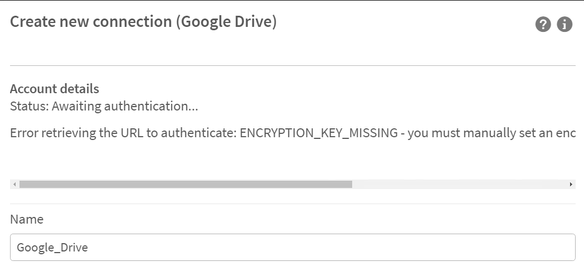Unlock a world of possibilities! Login now and discover the exclusive benefits awaiting you.
Recent Documents
-
R Integration with Qlik Sense
How to get started with R-Script integration within Qlik Sense The architecture of the integration at a High-level looks like this: Qlik Sense Advanc... Show MoreHow to get started with R-Script integration within Qlik Sense
The architecture of the integration at a High-level looks like this:
Qlik Sense Advanced Analytics integration is essentially an extension to Qlik Sense’s expression syntax, and as such it can be used in both Chart Expressions, and in Load Script Expressions.
With this new capability, we are now able to add syntax to a chart expression that tells Qlik Sense that particular expression should not be evaluated on the Qlik Sense server, but instead, all the information and data needed to calculate that expression should be sent via the server side extension on to the backend R system for calculation.
After the advanced analytic calculations are completed, the data is sent back to the Qlik Sense Server and to the client for visualization.
Environment:
- Qlik Sense Enterprise on Windows , all versions
Resolution:
This video shows an example of how Qlik Sense connects to an R server for extending expression capabilities in Qlik Sense Apps while offloading the calculations to the R server engine.
Click here for Video Transcript
In order to start displaying a simple "Hello World" in Qlik Sense using a R-Script, we will do the following:
1. Have R & R-studio installed in your system. (RGui included with R for Windows can also be used) R can be downloaded at https://cloud.r-project.org/
2. We need a package in R to extend R functionality to applications via TCP/IP. The package name is "Rserve()"
Install the package using the below command in RStudio GUI:install.packages('Rserve')
3. Now we need to invoke that library and start Rserve. In order to do so, execute the below scripts:library(Rserve) Rserve()
4.The communication method from Sense to R is taken care using gRPC. R is not a supported language in gRPC by default.
So a possible solution for this is to develop a connector in any of the supported languages of gRPC. Qlik provides an open-source connector developed in C# which in turn access Rserve to be able to run R scripts.
qlik-oss/sse-r-plugin
Once you built the connector, start the SSEtoRserve.exe (ideally on the Rserve server itself)Note: Qlik Support does not support this plugin directly. Inquiries should be submitted via GitHub under sse-r-plugin - Issues
5. Now we will have to configure the plugin:For Qlik Sense Desktop June 2019 and up:
Add the following line in the settings.ini file:
SSEPlugin=R,localhost:50051
The settings.ini is located in this location:C:\Users\[userid]\AppData\Local\Programs\Qlik\Sense\Engine\settings.iniFor previous Qlik Sense Desktop:
Add the following line in the settings.ini file:
SSEPlugin=R,localhost:50051
The settings.ini file is located in this location:C:\Users\(username)\Documents\Qlik\SenseFor Qlik Sense Enterprise/Server:
a. In the QMC, add a new Analytic Connection.
b. Restart the Qlik Sense Engine service.
Please refer to the screenshot below for creating a new connection.Note: If the R-Plugin (SSEtoRserve.exe) was installed on the R-Server (where Rserve runs) or another machine, point to that machine name instead of 'localhost'. Also, in multi-node environments with multiple Qlik Sense Engines, even if the plugin was installed on the Central node, make sure to add the Central node's hostname instead of 'localhost' as the other Rim node Engine services need the correct DNS/Netbios name to reach the plugin.
6. Now Open a Qlik Sense App and add a KPI object in the sheet. This can be one of the Apps included with the plugin itself under <storage path>\sse-r-plugin-master\sense_appsNote that the example apps also need data connections to be created to the data files included with these apps files in the above location.
7. Otherwise, a new app can be created and any data may be loaded for the SSE example below.
8. For the measure, add the following expression which contains an R-script:R.ScriptEvalStr('paste(q$firstWord, q$secondWord);', 'Hello' as firstWord, 'World' as secondWord)
9. If everything is configured properly, the R-script shown in bold above should be executed fine and it should display a "Hello World" message.Understanding the R-script & Function:
R.ScriptEvalStr('paste(q$firstWord, q$secondWord);', Only([First Word]) as firstWord, Only([Second Word]) as secondWord)
Eight script functions are automatically added to the functionality of the plugin. What is needed to be covered on the plugin side to fulfill the functionality is to implement the EvaluateScript rpc function.
The syntax of these functions is:<EngineSSEName>.<FunctionName>(Script [,Parameter...])
Where the Script is an R-Script to be evaluated & Parameter is the data sent from Qlik's end.
Here, we use the ScriptEvalStr function which accepts argument of type String & returns a String. The 'paste' function in R concatenates vectors after converting to character. We pass two data fields of type string from Qlik (First Word & Second Word). The R-script then references these data fields through the q dataframe (structure already taken care in R) (q$firstWord and q$secondWord). The script/function finally returns a String back to Qlik Sense.Related Content:
- Analytic Connections - Qlik Sense for Administrators
- Script Regular Statements - Load - Qlik Sense on Windows
- Creating an Advanced Analytics Server in 15 minutes using AWS
- Qlik Server-Side Extension (SSE) with Analytic Connections
- Getting Started with Advanced Analytics in Qlik Sense using Python
- How to call an external / custom function in Qlik Sense?
- Qlik Sense Analytic Connection (SSE) Error when reloading App
-
Administrator approval and consent for Web Connectors (Azure storage, Office 365...
Setting up Qlik Web Connectors may require you to provide administrator approval and consent for the respective apps (such as Azure storage, Office 35... Show MoreSetting up Qlik Web Connectors may require you to provide administrator approval and consent for the respective apps (such as Azure storage, Office 358 Sharepoint, and similar). This article aims to provide you with information on what needs to be requested.
Account Types
Personal Account: Once the connector has authorization to access the Microsoft account, there will be a corresponding entry in "My apps": https://myapps.microsoft.com/
Example:
Enterprise Account: These require additional configuration.
Granting Access for Enterprise Accounts
Once the enterprise application is selected, an application list will appear that the user can filter by searching for Qlik Web Connector:Select Qlik Web Connectors (such as Office 365 SharePoint) and look for the properties page. The page should have the following checkboxes ticked:- Enabled for users to sign-in? (Yes)
- User assignment required? (Yes) This field is only mandatory if the administrator wants to restrict access to the users.
- Visible to users? (Yes)
Testing (with administrator rights)
- Open the Qlik Office 365 SharePoint connector
- Select "Can Authenticate"
- Press the green button "Authenticate"
- You will be redirected to a Microsoft login page that should look similar to the following picture:
- If Azure grants access, the Qlik Webconnector application will generate a code as follows:
Testing (without administrator rights)If a basic (non-admin) user attempts to authenticate, the following message would appear in Azure:
To fix this, the administrator needs to grant access to the users.
Once the administrator grants access, the user will see the warning:Need admin approval
A list of required API permissions for each connector
At this stage, you will need to request your administrator to enable the following API permissions for your user:
Azure Storage
MSCRM V2
Office365 SharePoint
- https://graph.microsoft.com/User.Read
- https://microsoft.sharepoint.com/AllSites.Manage
- https://microsoft.sharepoint.com/AllSites.Read
- https://microsoft.sharepoint.com/MyFiles.Read
OneDrive V2
- https://graph.microsoft.com/User.Read
Files.Read.All will also be required, although this is not set in the app registration.
Outlook 365
- https://graph.microsoft.com/Calendars.Read
- https://graph.microsoft.com/Calendars.Read.Shared
- https://graph.microsoft.com/User.Read
- https://graph.microsoft.com/User.Read.All
- https://graph.microsoft.com/User.ReadBasic.All
contacts.read, contacts.read.shared, files.read, files.read.all, mail.read, mail.read.shared will also be required, although this is not set in the app registration.
Environment:
- Qlik Cloud Analytics
- Qlik Sense Enterprise on Windows
- Qlik Web Connectors
-
Qlik Sense Enterprise on Windows: Error retrieving the URL to authenticate: ENCR...
Some connectors require an encryption key before you create or edit a connection. Failing to generate a key will result in: Error retrieving the URL t... Show MoreSome connectors require an encryption key before you create or edit a connection. Failing to generate a key will result in:
Error retrieving the URL to authenticate: ENCRYPTION_KEY_MISSING - you must manually set an encryption key before creating new connections.
Environment
Qlik Sense Desktop February 2022 and onwards
Qlik Sense Enterprise on Windows February 2022 and onwards
all Qlik Web Storage Provider Connectors
Google Drive and Spreadsheets MetadataResolution
PowerShell demo on how to generate a key:
# Generates a 32 character base 64 encoded string based on a random 24 byte encryption key
function Get-Base64EncodedEncryptionKey {
$bytes = new-object 'System.Byte[]' (24)
(new-object System.Security.Cryptography.RNGCryptoServiceProvider).GetBytes($bytes)
[System.Convert]::ToBase64String($bytes)
}
$key = Get-Base64EncodedEncryptionKey
Write-Output "Get-Base64EncodedEncryptionKey: ""${key}"", Length: $($key.Length)"Example output:
Get-Base64EncodedEncryptionKey: "muICTp4TwWZnQNCmM6CEj4gzASoA+7xB", Length: 32
Qlik Sense Desktop
This command must be run by the same user that is running the Qlik Sense Engine Service (Engine.exe). For Qlik Sense Desktop, this should be the currently logged-in user.
Do the following:
-
Open a command prompt and navigate to the directory containing the connector .exe file. For example:
"cd C:\Program Files\Common Files\Qlik\Custom Data\QvWebStorageProviderConnectorPackage"
-
Run the following command:
QvWebStorageProviderConnectorPackage.exe /key {key}
Where {key} is the key you generated. For example, if you used the OpenSSL command, your key might look like: QvWebStorageProviderConnectorPackage.exe /key zmn72XnySfDjqUMXa9ScHaeJcaKRZYF9w3P6yYRr
-
You will receive a confirmation message:
Info: Set key. New key id=qseow_prm_custom.
Info: key set successfully!
Qlik Sense Enterprise on Windows
The {sense service user} must be the name of the Windows account which is running your Qlik Sense Engine Service. You can see this in the Windows Services manager. In this example, the user is: MYCOMPANY\senseserver.
Do the following:
-
Open a command prompt and run:
runas /user:{sense service user} cmd. For example:runas /user:MYCOMPANY\senseserver
-
Run the following two commands to switch to the directory containing the connectors and then set the key:
-
"cd C:\Program Files\Common Files\Qlik\Custom Data\QvWebStorageProviderConnectorPackage"
-
QvWebStorageProviderConnectorPackage.exe /key {key}
Where {key} is the key you generated. For example, if you used the OpenSSL command, your key might look like: QvWebStorageProviderConnectorPackage.exe /key zmn72XnySfDjqUMXa9ScHaeJcaKRZYF9w3P6yYRr
-
-
You should repeat this step, using the same key, on each node in the multinode environment.
-
Encryption keys will be stored in: "C:\Users\{sense service user}\AppData\Roaming\Qlik\QwcKeys\"
For example, encryption keys will be stored in "C:\Users\QvService\AppData\Roaming\Qlik\QwcKeys\"
Always run the command prompt while logged in with the Qlik Sense Service Account which is running your Qlik Sense Engine Service and which has access to all the required folders and files.
Cause
This security requirement came into effect in February 2022. Old connections made before then will still work, but you will not be able to edit them. If you try to create or edit a connection that needs a key, you will receive an error message: Error retrieving the URL to authenticate: ENCRYPTION_KEY_MISSING) - you must manually set an encryption key before creating new connections.
Related Content
-
-
Force Qlik Replicate to connect to secondary read-only node during Full Load
Instead of pulling the data from the Primary node, which can potentially negatively affect performance, we can force Qlik Replicate to connect to a se... Show MoreInstead of pulling the data from the Primary node, which can potentially negatively affect performance, we can force Qlik Replicate to connect to a secondary read-only node during Full Load.
To do so:
- When starting the task for the first time, Qlik Replicate will connect to the primary database and create a publication with all required articles. Once the creation of the publication is finished and the articles are added to the publication, stop the task.
- Set a new Internal Parameter in the SQL server endpoint, routing the connections to the secondary node.
Parameter: additionalConnectionProperties
Value: ApplicationIntent=ReadOnly
For more information regarding Internal Parameters, see Qlik Replicate: How to set Internal Parameters and what are they for. - Start the reload. As soon as you finished the Full load, stop the task and remove the additional parameter which you added in Step 2.
- Resume the task. All connections will now resume on the primary node.
Environment
- When starting the task for the first time, Qlik Replicate will connect to the primary database and create a publication with all required articles. Once the creation of the publication is finished and the articles are added to the publication, stop the task.
-
Qlik Sense Enterprise on Windows May 2025: Slow Data Load Editor
The Data Load Editor in Qlik Sense Enterprise on Windows 2025 experiences noticeable performance issues. Resolution The issue is caused by defect SU... Show MoreThe Data Load Editor in Qlik Sense Enterprise on Windows 2025 experiences noticeable performance issues.
Resolution
The issue is caused by defect SUPPORT-6006. Qlik is actively working on a fix.
Fix Version
A fix is planned for the next possible patches. Review the Release Notes for SUPPORT-6006.
Workaround
A workaround is available. It is viable as long as the Qlik SAP Connector is not in use.
- In a Windows file browser, navigate to C:\Program Files\Common Files\Qlik\Custom Data\
- Move the QvSapConnectorPackage directory to a different location
No service restart is required.
Internal Investigation ID(s)
SUPPORT-6006
Environment
- Qlik Sense Enterprise on Windows
-
Qlik Replicate: Best Practices and Recovery Steps for Redo Log Retention and Usa...
This article outlines recommended retention policies for Oracle redo logs and provides detailed recovery steps in scenarios where redo logs are needed... Show MoreThis article outlines recommended retention policies for Oracle redo logs and provides detailed recovery steps in scenarios where redo logs are needed. It includes guidance on preserving logs, identifying stream positions, verifying log availability, and using SCN-based recovery with SQL_REDO extraction for issue resolution.
Resolution
Generally, Qlik recommends a 24-hour retention period for redo logs, but this can vary depending on the storage capacity and backup policies of each organization, as they have different requirements.
When customers back up their redo logs, they typically retain backups for at least 2 weeks to 1 month. This allows them to restore the logs if necessary. The specific policy regarding the retention of redo logs in backup media should be clarified with the customer.
Steps to Take When Redo Logs Are Required for Recovery
- Preserve the Redo Logs: When an incident occurs, it’s critical to preserve the redo logs as quickly as possible. This ensures that they can be replayed if necessary.
- Identify the Stream Position: First, identify the stream position of the record that is failing. You can use the task log to locate the problematic record and its corresponding stream position.
- Verify Redo Log Existence: Once you have the stream position, determine the corresponding redo log sequence number and thread number. Verify whether the redo log still exists on disk.
If it exists on disk, copy it to a different filesystem to ensure it is not deleted by RMAN backups.
If the redo log has already been deleted, you will need to restore it from backup media. The DBA can assist in restoring the file from backup.
Replay the Redo Logs
- Locate the Redo Log File: Once the redo log is available, query the v$archived_log view to find where the redo log file is located. You can use the following SQL:
SELECT name, sequence#, thread#, first_change#
FROM v$archived_log
WHERE sequence# = [sequence#] AND thread# = [thread#]; - Get the SCN (System Change Number): Use the first_change# value from the query above as the starting point for the redo log recovery.
- Create a New Task in Replication: In your replication setup, create a new task and add the affected table. In the advanced options, provide the SCN value from the first_change# column, which marks the point where the task should start.
- Verify Reproduction: After setting the SCN, verify whether you can reproduce the issue. If you can, proceed with the next step.
- Log Mining and SQL_REDO: Use standard log mining to extract the SQL_REDO statements from the redo logs. These can be found in the V$logmnr_contents view. The SQL_REDO statements will provide the actual SQL that was executed, which will allow you to check if all column data was included in the redo log.
By following these steps, you can ensure proper recovery from redo logs and address any issues related to missing or inconsistent data.
Environment
- Qlik Replicate
- Preserve the Redo Logs: When an incident occurs, it’s critical to preserve the redo logs as quickly as possible. This ensures that they can be replayed if necessary.
-
Qlik Talend Cloud: Custom Context values lost during CICD artifact redeployment ...
During a CICD artifact update or redeployment, the custom context variables are lost. Cause CICD only publishes a new version of the artifact to the... Show MoreDuring a CICD artifact update or redeployment, the custom context variables are lost.
Cause
CICD only publishes a new version of the artifact to the Qlik Talend Management Console. When creating a task via the Qlik Talend Management Console API call, if the user includes the following parameters in their JSON request (as demonstrated in the Resolution section), it will result in updating the task with the newly published artifact and the default artifact context values.
Resolution
When creating a task via the Qlik Talend Management Console API for the first time, please ensure that the "overrideWithDefaultParameters" parameter is set to false in the "autoUpgradeInfo" section of the JSON body. For example:
"autoUpgradeInfo": {
"autoUpgradable": true,
"overrideWithDefaultParameters": false
}By setting overrideWithDefaultParameters to false during task creation, you can prevent the task from being updated with default context values for future artifact deployments via CICD.
Related Content
Environment
- Qlik Talend Studio
-
Qlik Replicate: Test connection and other UI endpoint operations fails for Snowf...
After upgrading Qlik Replicate from 2023.11 to 2024.11 or 2025.5, testing connections and other UI endpoint operations fail whenever you are using an ... Show MoreAfter upgrading Qlik Replicate from 2023.11 to 2024.11 or 2025.5, testing connections and other UI endpoint operations fail whenever you are using an ADDON (such as UDF) that retrieves the password from the Vault.
The task works correctly. It is only the connection test that fails.
The following messages are from the task logs:
Error: SYS-E-HTTPFAIL, SYS-E-HTTPFAIL, Failed in prepare imp for Snowflake.. SYS,GENERAL_EXCEPTION,SYS-E-HTTPFAIL, Failed in prepare imp for Snowflake.,SYS,GENERAL_EXCEPTION,Failed in prepare imp for Snowflake,Failed to deobfuscate password
[INFRASTRUCTURE ]W: Password provider is not registered (at_secure.c:2454) (child_proc_exec.c:36)
[SERVER ]E: Failed to deobfuscate password [1003200] (cloud_imp.c:3700) (child_proc_exec.c:36)
[INFRASTRUCTURE ]T: Process id 396 : 00005244: 2025-06-26T12:42:26 [SERVER ]E: Failed in prepare imp for Snowflake [1003200] (cloud_imp.c:4770) (child_proc_exec.c:36)Resolution
This has been identified as a defect (ID RECOB-10010).
Fix Version
The fix is scheduled for the Qilk Replicate release in November 2025. See the Release Notes for details.
Cause
The child REPCTL process does not identify the ADDON.
Internal Investigation ID(s)
RECOB-10010
Environment
- Qlik Replicate
-
Qlik Replicate: Failure in resolving table name for objid %
A Qlik Replicate task with MSSQL as a source and Oracle as a target fails during Full Load and CDC. The error logged: Failure in resolving table name ... Show MoreA Qlik Replicate task with MSSQL as a source and Oracle as a target fails during Full Load and CDC.
The error logged:
Failure in resolving table name for objid %
Resolution
Failure in resolving table name for objid is commonly linked to temporary tables. When applications create temporary tables, they are logged in the transaction log. Qlik Replicate attempts to resolve the object ID from the log, but may fail if the object is unknown or transient.
To investigate further and to identify if there is data loss:
-
Run the following query to identify the table name:
SELECT name, object_id FROM sys.objects WHERE type = 'U' AND object_id LIKE '%' -- Replace % with the actual objid - Consult with your database administrator to determine whether the object is a temporary table or if any maintenance activities have been performed.
- If the table is a temporary table, you can disregard the error.
- If data loss occurs due to maintenance activities, please open a support case with Qlik Support.
Cause
This error is often associated with temporary tables. When an application creates temporary tables, they are written to the transaction log.
Qlik Replicate then attempts to read an unknown object ID from this log and fails to resolve it to a table name.
Environment
- Qlik Replicate
-
-
How to create NPrinting GET and POST REST connections
NPrinting has a library of APIs that can be used to customize many native NPrinting functions outside the NPrinting Web Console. Environment: Qlik N... Show MoreNPrinting has a library of APIs that can be used to customize many native NPrinting functions outside the NPrinting Web Console.
Environment:
An example of two of the more common capabilities available via NPrinting APIs are as follows
- Connection reloads
- Publish Task executions
These and many other public NPrinting APIs can be found here: Qlik NPrinting API
In the Qlik Sense data load editor of your Qlik Sense app, two REST connections are required (These two REST Connectors must also be configured in the QlikView Desktop application>load where the API's are used. See Nprinting Rest API Connection through QlikView desktop)
- GET
- POST
Requirements of REST user account:
- Windows Authentication is required in both these connectors. The required user account is the NPrinting service account (which is also ROOTADMIN on the Qlik Sense server)
- This user account must also be a member of the NPrinting 'Administrators' Security Role on the NPrinting Server.
Creating REST "GET" connections
Note: Replace QlikServer3.domain.local with the name and port of your NPrinting Server
NOTE: replace domain\administrator with the domain and user name of your NPrinting service user account
Creating REST "POST" connections
Note: Replace QlikServer3.domain.local with the name and port of your NPrinting Server
NOTE: replace domain\administrator with the domain and user name of your NPrinting service user account
Ensure to enter the 'Name' Origin and 'Value' of the Qlik Sense (or QlikView) server address in your POST REST connection only.
Replace https://qlikserver1.domain.local with your Qlik sense (or QlikView) server address.
Ensure that the 'Origin' Qlik Sense or QlikView server is added as a 'Trusted Origin' on the NPrinting Server computer
Related Content
- Distribute NPrinting reports after reloading a Qlik App
- Extending Qlik NPrinting
- Run a Qlik NPrinting API POST command via QlikView reload script
- Troubleshooting Common NPrinting API Errors
NOTE: The information in this article is provided as-is and to be used at own discretion. NPrinting API usage requires developer expertise and usage therein is significant customization outside the turnkey NPrinting Web Console functionality. Depending on tool(s) used, customization(s), and/or other factors ongoing, support on the solution below may not be provided by Qlik Support.
-
Qlik Replicate: Create Unique ID Column Header for Kafka Target
Scenario: A task with Sybase ASE as the Source and Confluent Kafka as the Destination. Requirement: Create a new column with a unique identifier "UUID... Show MoreScenario: A task with Sybase ASE as the Source and Confluent Kafka as the Destination.
Requirement: Create a new column with a unique identifier "UUID" to identify the message in Confluent Kafka.
Is there any customization in Qlik Replicate that allows the creation of a unique sequencer for each replicated record per table?
Resolution
The following transformation is provided as is. For more detailed customization assistance, post your requirement in the Qlik Replicate forum, where your knowledgeable Qlik peers and our active Support Agents can help. If you need direct assistance, contact Qlik's Consulting Services.
You can add a new column and hard-code it to a unique (random) value by using the Transform tab in Table Settings.
Example Expression Value:
substr(lower(hex(randomblob(16))),1,8) || '-' || substr(lower(hex(randomblob(16))),9,4) || '-4' || substr(lower(hex(randomblob(16))),13,3) || '-' || substr('89ab', abs(random()) % 4 + 1, 1) || substr(lower(hex(randomblob(16))),17,3) || '-' || substr(lower(hex(randomblob(16))),21,12)For more information on transformations, see Defining transformations for a single table/view.
Environment
- Qlik Replicate
-
Qlik Cloud: MS Access data not loaded using Data Manager and ODBC
Loading MS Access DB data via Qlik Data Gateway fails when using the Data Manager. The following error is thrown: Failed to add data Data could not be... Show MoreLoading MS Access DB data via Qlik Data Gateway fails when using the Data Manager. The following error is thrown:
Failed to add data
Data could not be added to Data manager. Please verify that all data sources connected to the app are working and try adding the data again.
Loading data through the Data Load Editor works as expected.
Reviewing the ODBC log for additional details highlights the error:
System.Exception: ODBC Wrapper: Unable to execute SQLForeignKeys: [Microsoft][ODBC Driver Manager] Driver does not support this function
Resolution
This is a driver-related issue and a known limitation.
Use the Data Load Editor instead of the Data Manager.
Considerations of using MS Access with Qlik Sense:
MS Access is a legacy technology dating back to the 1990s; loading data from a file-based Access database via ODBC into a modern BI tool is considered an outdated solution. Moreover, with larger files, this approach is likely to result in significant performance degradation during data loading.
Cause
The MS Access ODBC driver does not support the SQLForeignKeys ODBC function.
Environment
- Qlik Cloud Analytics
-
Qlik Talend Products: Unable to Connect to Azure SQL Database after enabling TLS...
You may encounter this issue that unable to connect to Azure SQL Database after enabling TLS v1.2 on the database side, and gives an error when execut... Show MoreYou may encounter this issue that unable to connect to Azure SQL Database after enabling TLS v1.2 on the database side, and gives an error when executing the task on the Talend management Console side.
java.sql.SQLException: Reason: Login failed due to client TLS version being less than minimal TLS version allowed by the server.
Resolution
When using the MSSQL components in Talend Studio, Qlik Talend components support 2 kinds of driver (explicit choice to make). The open source one JTDS or the official Microsoft jdbc driver.
It is recommended to use the official MSSQL driver to ensure greater compatibility. The jTDS is not recommended but can still be supported and this driver in a “deprecated” status, Keep this possibility to use this driver for users who want to use it and for whom it remains compatible with their databases.
There are two solutions for this issue as belows
Solution 1
The jTDS driver prior 1.2 does not support TLS v1.2. Please use the official JDBC driver from Microsoft (switch to the official MSSQL driver to ensure greater compatibility).
- https://learn.microsoft.com/en-us/sql/connect/jdbc/download-microsoft-jdbc-driver-for-sql-server
- ways-to-install-external-modules-into-Talend-Studio
Solution 2
Add ssl=require to the end of the JDBC connection URL (ex: jdbc:jtds:sqlserver://my-example-instance.c656df8582985.database.windows.net:1433;ssl=require), or in "Additional JDBC parameters" field of MSSQL components and then re-publish the job and run on Talend management Console.
Cause
The open source jTDS driver, specifically earlier versions like 1.2, does not natively support TLS 1.2. This can lead to connection failures when connecting to SQL Server instances that enforce TLS 1.2, such as Azure SQL Managed Instances or on-premises servers configured to require TLS 1.2 for security reason.
Related Content
Environment
-
Does Microsoft's End of Life for Microsoft SSIS CDC Components Impact Replicate?
Microsoft will deprecate Change Data Capture (CDC) components by Attunity. See SQL Server Integration Services (SSIS) Change Data Capture Attunity fea... Show MoreMicrosoft will deprecate Change Data Capture (CDC) components by Attunity. See SQL Server Integration Services (SSIS) Change Data Capture Attunity feature deprecations | microsoft.com for details.
Will this affect Qlik Replicate?
Resolution
This announcement does not affect Qlik Replicate. It is only relevant to the product "Change Data Capture (CDC) components by Attunity".
Microsoft distributes and provides primary support for this product. Qlik Replicate's functionality will remain the same.
Environment
- Qlik Replicate
-
Qlik Sense Enterprise on Windows: How to connect to SAP HANA via the ODBC Driver...
Qlik supports connecting to SAP HANA DATABASE using Qlik's QvOdbcConnectorPackage. This assumes that the SAP HDBODBC Driver has been installed on the ... Show MoreQlik supports connecting to SAP HANA DATABASE using Qlik's QvOdbcConnectorPackage. This assumes that the SAP HDBODBC Driver has been installed on the Qlik system.
To connect to the HANA Database using ODBC drivers:
- Open the ODBC Data Sources from your system and check if the HDBODBC driver is installed:
-
If the drivers are missing, install SAP HANA CLIENT (see SAP HANA AND QLIK VIEW/SENSE | community.sap.com for details)
-
From ODBC Data Sources > USER DSN, select HDBODBC and complete your configuration
-
In Qlik Sense, use the created ODBC DSN to create a new connection
Environment
- Qlik Sense Enterprise on Windows
- Open the ODBC Data Sources from your system and check if the HDBODBC driver is installed:
-
Qlik Replicate Task Failure: Archived Redo Log Sequence Reported Missing Despite...
Even if the archived redo logs are not deleted, the following error may still occur, causing task failure: 2025-06-19T15:20:29 [SOURCE_CAPTURE ]E: Arc... Show MoreEven if the archived redo logs are not deleted, the following error may still occur, causing task failure:
2025-06-19T15:20:29 [SOURCE_CAPTURE ]E: Archived Redo log with the sequence '188055' does not exist, thread 5 [1022318] (oradcdc_thread.c:711)
Two DEST_IDs exist.
ARCHIVED Log Status – Query Execution Results
SEQUENCE#,THREAD#,NAME,DEST_ID,FIRST_TIME,NEXT_TIME,DELETED,COMPLETION_TIME
188055,5,,1,2025-06-19 15:18:43,2025-06-19 15:20:28,YES,2025-06-19 15:20:28
188055,5,dg_osaka,2,2025-06-19 15:18:43,2025-06-19 15:20:28,NO,2025-06-19 15:20:28Resolution
If multiple DEST_IDs exist, have the Oracle DBA check the configuration and set the correct values for the Archived and Alternate Redo Logs Destination IDs.
Cause
If multiple DEST_IDs exist and neither the archived redo logs location identifier nor the alternate archived redo logs destination ID is specified, the Qlik Replicate server will use the lowest existing DEST_ID.
As a result, Qlik Replicate will only use DEST_ID=1, which causes the issue.
Environment
- Qlik Replicate
-
Qlik Data Gateway: Unable to change Process Isolation settings
The Save button is greyed out when enabling or disabling the Process Isolation setting in Data Gateway. This issue only occurs when the Gateway has be... Show MoreThe Save button is greyed out when enabling or disabling the Process Isolation setting in Data Gateway. This issue only occurs when the Gateway has been upgraded from older versions.
Resolution
- Log in to your Qlik Cloud tenant and open the Administration Console
- Navigate to Data Gateways and open the Data Gateway experiencing the issue
- Open each connector (ODBC, SAP, REST, and similar), and modify the Number of concurrent reload processes to a value between 2 and 100.
This must be done on all connectors, even if they are not actively used.
- Change Process Isolation; the Save button is now available.
Internal Investigation ID(s)
DG-444
Environment
- Qlik Data Gateway
- Qlik Cloud Analytics
-
Qlik Replicate SAP Hana Trigger Base Backend DB Endpoint using Full Record Mode ...
The new SAP Hana trigger based backend DB Endpoint, used with the SAP Application DB Endpoint, fails when using the new Full Record Mode (V4) triggers... Show MoreThe new SAP Hana trigger based backend DB Endpoint, used with the SAP Application DB Endpoint, fails when using the new Full Record Mode (V4) triggers.
The logged error:
RetCode: SQL_ERROR SqlState: S1000 NativeError: 362 Message: [SAP AG][LIBODBCHDB DLL][HDBODBC] General error;362 invalid schema name: R4S - SCHEMA_NAME: line 1 col 15 (at pos 14) [1022502]
Failed to get table R4S - SCHEMA.TABLE_NAME definition [1022500]Resolution
Upgrade to Qlik Replicate 2024.11 SP05 or higher.
Cause
An update was necessary to Qlik Replicate due to how the table list is being captured in the SAP Source Endpoint.
Internal Investigation ID(s)
RECOB-10089
Environment
- Qlik Replicate versions before 2024.11 SP05
-
Qlik Stitch Facebook Ads Extraction Error: Please reduce the amount of data you'...
The purpose of this article is to address an extraction error that occurs with the Facebook Ads integration when replicating data from the ads table. ... Show MoreThe purpose of this article is to address an extraction error that occurs with the Facebook Ads integration when replicating data from the ads table. Users may encounter a 500 error when using the Facebook Ads integration in Stitch.
The error message states:
tap - Status: 500
tap - Response:
tap - {
tap - "error": {
"code": 1,
"message": "Please reduce the amount of data you're asking for, then retry your request"
Cause
This error occurs when the API request to Facebook's API exceeds its data limit threshold. Facebook imposes this limitation to manage server load and prevent excessive data requests. If Stitch requests too many fields for this table, it will result in this error. Essentially what is happening is the 500 error you're encountering with the Facebook Ads integration is related to requesting too much data from Facebook's API.
To resolve this issue, you need to reduce the number of fields selected for the Ads table. This limitation is imposed by Facebook's API, and Stitch does not have control over it. The error code 1 in the log stack is a general error code used by Facebook, but in this case, the accompanying message provides more specific information about the issue. The message "Please reduce the amount of data you're asking for, then retry your request" clearly indicates that the problem is related to requesting too much data for the table.
Keep in mind that some 500 errors and code 1 errors from the Facebook Ads API can be intermittent and may resolve on their own during the next extraction attempt. However, in this specific case, reducing the amount of data requested by de-selecting fields for the affected table is the recommended solution.
Resolution
To address the problem:
- Deselect some fields from the Ads table in your integration settings.
- After reducing the number of selected fields, proceed to save the changes within the Stitch UI. Subsequently, attempt to rerun the integration via the Extraction tab by clicking on 'Run Extraction Now'.
This approach should allow the integration to progress further. Currently, this is the only available option to resolve the issue. There is no estimated time for a fix from Facebook's side, so adjusting your field selection is the best course of action.
If the problem persists after reducing the fields, you may need to adjust the field selections until the API accepts the request:
- Continue to reduce field selections for the affected table until the extraction Job runs without error.
- Perform a manual extraction when you feel ready with the field selections for the affected table.
Environment
-
Qlik Talend Data Preparation: Unable to import CSV files into Datasets with wron...
You may encounter this error that unable to import csv files into Talend Data Preparation Datasets which gives Import Error and the oauth authenticait... Show MoreYou may encounter this error that unable to import csv files into Talend Data Preparation Datasets which gives Import Error and the oauth authenticaiton failed message.
Log
2025-08-13 14:04:21.403 ERROR [user ] 1678370 --- [nio-9999-exec-3] o.t.d.exception.TDPExceptionController : An error occurred. Error : org.talend.dataprep.exception.TDPExceptionFlowControl: Sorry, an unexpected error occurred and we could not complete your last operation. You can continue to use Data Preparation | Context : {}
2025-08-13 14:04:21.416 ERROR [user ] 1678370 --- [nio-9999-exec-5] o.t.d.exception.TDPExceptionController : An error occurred : {cause=null}org.talend.dataprep.exception.TDPException: 500 Internal Server Error from GET http://1.2.3.4:9999/datasets/9d69c531-b630-4c5e-b2ca-b9cb73f7910d/content
at org.talend.dataprep.processor.ExceptionsConfiguration$ExceptionsConversions.lambda$doWith$1(ExceptionsConfiguration.java:109)
at org.talend.dataprep.conversions.BeanConversionService.convert(BeanConversionService.java:189)
at org.talend.dataprep.command.GenericCommand$ErrorHandler.getTDPExceptionFromDTO(GenericCommand.java:546)
at org.talend.dataprep.command.GenericCommand$ErrorHandler.apply(GenericCommand.java:519)
at org.talend.dataprep.command.GenericCommand$ErrorHandler.apply(GenericCommand.java:495)
at org.talend.dataprep.command.GenericCommand.executeCall(GenericCommand.java:253)
at org.talend.dataprep.command.GenericCommand.execute(GenericCommand.java:265)
at org.talend.dataprep.dataset.adapter.DataInventoryClient.getDataSetContent(DataInventoryClient.java:263)
2025-08-13 14:04:38.385 ERROR [user ] 1678370 --- [nio-9999-exec-4] o.t.d.exception.TDPExceptionController : An error occurred. Error : org.talend.dataprep.exception.TDPExceptionFlowControl: ACL_NOT_FOUND.MESSAGE | Context : {entityId=689c39066827013844aa11d1}
2025-08-13 14:04:38.393 WARN [user ] 1678370 --- [or-http-epoll-8] o.t.dataprep.sharing.SharingWebClient : Sharing client error with : 404 Not Found from GET http://1.2.3.4:9999/sharing/v1/sharingset/preparation_folder/689c39066827013844aa11d1
2025-08-13 14:04:38.621 WARN [user ] 1678370 --- [nio-9999-exec-2] o.t.d.cache.MultiTenantKeyGenerator : No Current tenant in the context we can't add the tenantId into the cache key
2025-08-13 14:04:38.991 ERROR [user ] 1678370 --- [io-9999-exec-10] o.t.d.exception.TDPExceptionController : An error occurred. Error : org.talend.dataprep.exception.TDPExceptionFlowControl: ACL_NOT_FOUND.MESSAGE | Context : {entityId=689c39066827013844aa11d1}
2025-08-13 14:04:38.993 WARN [user ] 1678370 --- [or-http-epoll-8] o.t.dataprep.sharing.SharingWebClient : Sharing client error with : 404 Not Found from GET http://1.2.3.4:9999/sharing/v1/sharingset/preparation_folder/689c39066827013844aa11d1
2025-08-13 14:04:39.826 WARN [user ] 1678370 --- [nio-9999-exec-1] o.t.d.cache.MultiTenantKeyGenerator : No Current tenant in the context we can't add the tenantId into the cache key2025-08-13 14:05:00.316 ERROR [user ] 1678370 --- [nio-9999-exec-4] o.t.d.exception.TDPExceptionController : An error occurred. Error : org.talend.dataprep.exception.TDPExceptionFlowControl: ACL_NOT_FOUND.MESSAGE | Context : {entityId=3168a305-05d1-41ee-9c9e-b43f18c49c96}
2025-08-13 14:05:00.319 WARN [user ] 1678370 --- [or-http-epoll-9] o.t.dataprep.sharing.SharingWebClient : Sharing client error with : 404 Not Found from GET http://1.2.3.4:9999/sharing/v1/sharingset/dataset/3168a305-05d1-41ee-9c9e-b43f18c49c96
2025-08-13 14:05:00.513 ERROR [user ] 1678370 --- [io-9999-exec-10] o.t.d.exception.TDPExceptionController : An error occurred. Error : org.talend.dataprep.exception.TDPExceptionFlowControl: ACL_NOT_FOUND.MESSAGE | Context : {entityId=3168a305-05d1-41ee-9c9e-b43f18c49c96}
2025-08-13 14:05:00.516 WARN [user ] 1678370 --- [or-http-epoll-9] o.t.dataprep.sharing.SharingWebClient : Sharing client error with : 404 Not Found from GET http://1.2.3.4:9999/sharing/v1/sharingset/dataset/3168a305-05d1-41ee-9c9e-b43f18c49c96
2025-08-13 14:05:01.684 ERROR [user ] 1678370 --- [nio-9999-exec-6] o.t.d.d.s.a.synchronous.SchemaAnalysis : Unable to analyse schema for dataset 3168a305-05d1-41ee-9c9e-b43f18c49c96.
org.springframework.web.client.HttpClientErrorException$Unauthorized: 401 on GET request for "http://localhost:8187/artifacts/t_default/lastVersion": "{"status":401,"title":"Unauthorized"}"
at org.talend.tsd.maven.publisher.controller.ApiClient.invokeAPI(ApiClient.java:579)
at org.talend.tsd.maven.publisher.controller.api.ArtifactsApi.lastVersionWithHttpInfo(ArtifactsApi.java:95)
at org.talend.tsd.maven.publisher.controller.api.ArtifactsApi.lastVersion(ArtifactsApi.java:57)
at org.talend.tsd.dictionary.provider.service.IndexVersionsCache.getLastVersionFromProducer(IndexVersionsCache.java:43)
2025-08-13 14:05:01.701 ERROR [user ] 1678370 --- [nio-9999-exec-6] o.t.d.exception.TDPExceptionController : An error occurred : {}
org.talend.dataprep.exception.TDPException: Sorry, an unexpected error occurred and we could not complete your last operation. You can continue to use Data Preparation
at org.talend.dataprep.exception.TDPException.rethrowOrWrap(TDPException.java:63)
at org.talend.dataprep.dataset.service.analysis.synchronous.SchemaAnalysis.analyze(SchemaAnalysis.java:109)
at org.talend.dataprep.dataset.service.BaseDataSetService.analyzeDataSet(BaseDataSetService.java:112)
at org.talend.dataprep.dataset.service.DataSetService.create(DataSetService.java:443)
Caused by: org.springframework.web.client.HttpClientErrorException$Unauthorized: 401 on GET request for "http://localhost:8187/artifacts/t_default/lastVersion": "{"status":401,"title":"Unauthorized"}"
at org.talend.tsd.maven.publisher.controller.ApiClient.invokeAPI(ApiClient.java:579)
at org.talend.tsd.maven.publisher.controller.api.ArtifactsApi.lastVersionWithHttpInfo(ArtifactsApi.java:95)
at org.talend.tsd.maven.publisher.controller.api.ArtifactsApi.lastVersion(ArtifactsApi.java:57)
at org.talend.tsd.dictionary.provider.service.IndexVersionsCache.getLastVersionFromProducer(IndexVersionsCache.java:43)
at org.talend.tsd.dictionary.provider.service.DictionaryProviderFacade.getBy(DictionaryProviderFacade.java:17)
at org.talend.dataprep.configuration.ExtendedDictionarySnapshotProviderImpl$ExtendedDictionarySnapshotImpl.<init>(ExtendedDictionarySnapshotProviderImpl.java:58)
at org.talend.dataprep.configuration.ExtendedDictionarySnapshotProviderImpl.get(ExtendedDictionarySnapshotProviderImpl.java:47)
at org.talend.dataprep.dataset.service.analysis.synchronous.SchemaAnalysis.analyze(SchemaAnalysis.java:84)
2025-08-13 14:05:01.711 ERROR [user ] 1678370 --- [or-http-epoll-8] o.t.d.d.adapter.DataInventoryClient : Error when create dataSet Purview_ApplicationService-sample from content
org.springframework.web.reactive.function.client.WebClientResponseException$InternalServerError: 500 Internal Server Error from POST http://1.2.3.4:9999/dataset/v1/datasets/
at org.springframework.web.reactive.function.client.WebClientResponseException.create(WebClientResponseException.java:332)
Suppressed: reactor.core.publisher.FluxOnAssembly$OnAssemblyException:
Error has been observed at the following site(s):
*__checkpoint ⇢ 500 INTERNAL_SERVER_ERROR from POST http://1.2.3.4:9999/dataset/v1/datasets/ [DefaultWebClient]
Original Stack Trace:
2025-08-13 14:05:01.716 ERROR [user ] 1678370 --- [nio-9999-exec-3] o.t.d.exception.TDPExceptionController : An error occurred : {}
org.talend.dataprep.exception.TDPException: An error has occurred during the import.
at org.talend.dataprep.dataset.adapter.DataInventoryClient.lambda$createDatasetFromContent$4(DataInventoryClient.java:292)
Suppressed: [CIRCULAR REFERENCE: org.springframework.web.reactive.function.client.WebClientResponseException$InternalServerError: 500 Internal Server Error from POST http://1.2.3.4:9999/dataset/v1/datasets/]
Caused by: org.springframework.web.reactive.function.client.WebClientResponseException$InternalServerError: 500 Internal Server Error from POST http://1.2.3.4:9999/dataset/v1/datasets/
at org.springframework.web.reactive.function.client.WebClientResponseException.create(WebClientResponseException.java:332)
Suppressed: reactor.core.publisher.FluxOnAssembly$OnAssemblyException:
Error has been observed at the following site(s):
*__checkpoint ⇢ 500 INTERNAL_SERVER_ERROR from POST http://1.2.3.4:9999/dataset/v1/datasets/ [DefaultWebClient]Oauth Authenticaiton Failed
org.springframework.web.client.HttpClientErrorException$Unauthorized: 401 on GET request for "http://localhost:8187/artifacts/t_default/lastVersion": "{"status":401,"title":"Unauthorized"}"
Resolution
- Revise the client_secret value in iam/config/clients/dqdict-client.json with the correct value from oidc.semanticservice.secret in dq_dict/config/data-quality.properties
oidc.semanticservice.secret=5yjRGCv-f5e15374fae358e1-Lp3Q
- Restart IAM Server to take affect the change
Cause
Since Talend Data Preparation is connected with dq-dict service per schema analysis module, this issue is caused by DQ-Dictionary-IAM-setting and iam/config/clients/dqdict-client.json is configured improperly with wrong client_secret
{"client_name" : "DQ Dict API Server", "application_type" : "web", "client_id" : "FqtrjyZu7hTsoQ", "client_secret" : "/5TG+15LvXy7DE49z+UdmSPdBhwVBUt8ptVSF2m0Dx5YN4+81PUjfBTv90TG4OSZezR98o5L/byb", "grant_types" : [ "password", "authorization_code" ] }which is not aligned with the oidc.semanticservice.secret in dq_dict/config/data-quality.properties
oidc.semanticservice.secret=5yjRGCv-f5e15374fae358e1-Lp3Q
Environment
- # Qlik Talend Data Preparation
- Talend Data Integration
- Revise the client_secret value in iam/config/clients/dqdict-client.json with the correct value from oidc.semanticservice.secret in dq_dict/config/data-quality.properties










































